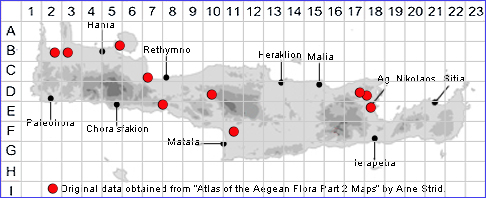SPECIES DESCRIPTION
TRIFOLIUM SQUAMOSUM
Family and Genus:- See- LEGUMINOSAE/Subgen. TRIFOLIUM/Sect.
Common Names:- Sea clover
Homotypic Synonyms:- None
Meaning:- Trifolium (L) With three leaflets.
Squamosum (L) Scale-clad, covered with scales, with scale-like
leaves.
General description:- Suberect annual.
Stems:-
1) 10-40 cm, sparingly branched, sparsely patent-pilose.
Leaves:-
1) Upper leaflets, 10-20 x 6-8 mm, narrowly obovate-cuneate or oblong, often
apiculate. the two uppermost leaves opposite.
2) Stipules, oblong, scarious with green veins; free part long, linear-lanceolate,
herbaceous.
Flowers:-
1) Heads, subterminal on rather short peduncles, dense, ovoid at anthesis.
2) Calyx tube, straw-coloured, subglabrous, 10-ribbed, broadly cylindrical at
anthesis, soon accrescent and indurate;
a) teeth, lanceolate-acuminate, herbaceous, the lower longer and broader than
the others, strongly 3-veined.
b) throat, closed by a bilabiate callosity, leaving only a narrow vertical slit.
3) Fruiting calyx, tough, with a campanulate tube, glabrous, or thinly hairy above,
the 10 veins and furrows disappearing below the dilated mouth;
a) teeth, lanceolate-acuminate, spreading, herbaceous, the lowest distinctly 3-
veined and equalling the tube, the other four 1- or 3-veined, about ½ as long as
the tube.
4) Corolla, 5-7 mm, somewhat exceeding the calyx, white or pinkish.
Fruit:-
1) Legume, included.
Key features:-
1) Calyx throat, closed by a bilabiate callosity, leaving only a narrow vertical slit.
2) Calyx-tube, campanulate, glabrous or sparsely hairy above.
3) Leaflets, 10-20 mm.
4) Calyx-teeth, distinctly 3-veined to the middle or above.
Habitat:- Saline and brackish meadows by the sea, sometimes in seasonally wet
spots in olive groves, along irrigation channels, etc., up to 600 m.
Distribution:- Scattered throughout Greece. - W Europe, Mediterranean area and
eastwards to Iran. Fairly rare on Crete currently known from only a few scattered
locations in the E and W of the island.
Flowering time:- Mid-Apr to early June.
Photos by:- Len Worthington

